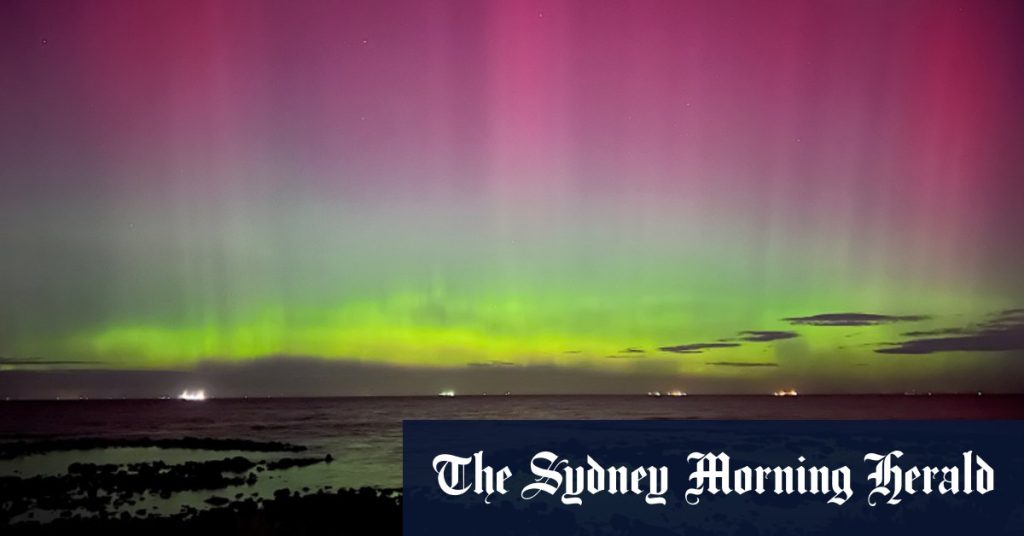Stargazers in southern Australia were thrilled by a stunning display of aurora australis on the weekend, with pink and green hues dancing across the night sky. The phenomenon was visible across Tasmania, outback Western Australia, and coastal regions of Victoria and South Australia, with some reports of sightings even in major cities like Melbourne, Adelaide, and Perth. While heavy cloud cover in some areas made the aurora less vibrant, many people were still able to witness the breathtaking spectacle.
The Bureau of Meteorology has issued a forecast for another opportunity to see the southern lights on Sunday night, with an “intense” geomagnetic storm expected to last until Monday morning. This storm is said to be the strongest in over 20 years, resulting in bright auroras visible across most of southern Australia and reaching as far north as the Pilbara region of Western Australia. Those interested in catching a glimpse of the phenomenon are advised to seek out locations with cloud-free skies and minimal light pollution away from city centers.
The aurora australis, also known as the southern lights, is typically seen in Tasmania or Victoria’s far south, making sightings in areas like Melbourne and Perth a rare and special occurrence. However, geomagnetic storms can cause the auroras to be visible in more widespread areas, creating opportunities for people in different parts of Australia to witness this natural wonder. Timing is key when trying to observe the southern lights, with the best chances usually between 10pm and 2am, although the exact timing can be unpredictable.
While some regions like Sydney and Canberra missed out on the recent aurora show due to heavy cloud cover and rainfall, other areas were treated to a spectacular light display that left spectators in awe. The colors and patterns created by the aurora australis are a result of energized particles interacting with Earth’s magnetic field, producing a mesmerizing and unforgettable visual experience for those lucky enough to witness it. The rarity and unpredictability of the southern lights make each sighting a unique and memorable event for those who appreciate the beauty of the natural world.
Aurora hunters and photography enthusiasts alike have been eager to capture the magic of the southern lights, sharing their experiences and images on social media platforms to inspire and connect with others who share their passion for astronomy and natural phenomena. The Bureau of Meteorology’s updates on geomagnetic activity and aurora forecasts have helped inform and guide those interested in chasing the auroras, providing valuable information on where and when to look for the dazzling light show in the night sky. As interest in aurora hunting grows, more people are discovering the joy and wonder of witnessing these celestial displays firsthand.
As the skies continue to light up with the aurora australis, more opportunities for viewing and photographing the southern lights are likely to arise, offering stargazers and nature lovers a chance to witness the beauty of the natural world in a unique and captivating way. Whether in remote, dark sky locations or urban areas with less light pollution, the aurora australis has the power to inspire and delight those who take the time to look up and appreciate the wonders of the universe unfolding above them. The magic and mystery of the southern lights serve as a reminder of the awe-inspiring forces at play in our planet’s atmosphere, inviting us to marvel at the beauty and complexity of the world we inhabit.


